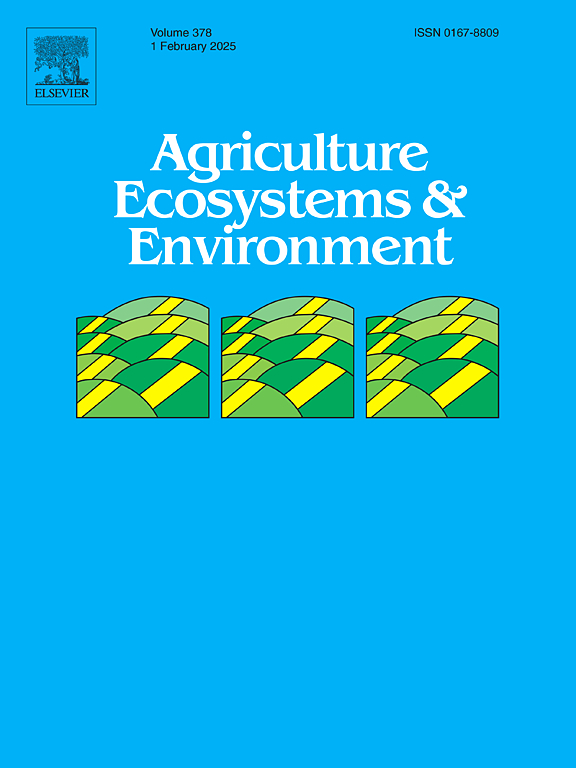Soil microbial and plant biomass carbon allocation within perennial and annual grain cropping systems
IF 6
1区 农林科学
Q1 AGRICULTURE, MULTIDISCIPLINARY
引用次数: 0
Abstract
Perennial crops may improve the environmental sustainability of agriculture through their continuous growth, low inputs, and high root biomass. Extensive root growth of perennial grass crops, especially, can confer benefits such as improved soil health and soil carbon (C) storage both directly through biomass production and indirectly through stimulating soil microbial communities. To test these ideas, we compared crop productivity (grain, vegetative, and root biomass), soil microbial abundance, and soil microbial activity across six cropping systems for three years (2017–2019). The six cropping systems included the perennial species intermediate wheatgrass (Thinopyrum intermedium (Host.) Barkw. & D.R. Dewey; IWG), alfalfa (Medicago sativa L.), and a biculture of both. Annual crop rotations included wheat, soybean, and corn (Zea mays). IWG monocultures produced an average of 7.4 Mg ha−1 of root biomass over three years, two to three times more than annual systems. Because of early spring and fall vegetative growth, IWG and alfalfa had higher canopy density for a greater duration of the growing season than annual crops. IWG also had higher soil respiration in 2017 and 2019. These growth attributes of IWG were translating to higher fungal and Gram-negative bacterial lipid biomass than alfalfa or annual crops in 2019, also the year of the highest general microbial growth. The abundant root growth, annual duration of growing period, and conducive environment for microbial growth under IWG systems indicates the potential for future C storage, which may be offset to a degree by increased soil respiration.
求助全文
约1分钟内获得全文
求助全文
来源期刊

Agriculture, Ecosystems & Environment
环境科学-环境科学
CiteScore
11.70
自引率
9.10%
发文量
392
审稿时长
26 days
期刊介绍:
Agriculture, Ecosystems and Environment publishes scientific articles dealing with the interface between agroecosystems and the natural environment, specifically how agriculture influences the environment and how changes in that environment impact agroecosystems. Preference is given to papers from experimental and observational research at the field, system or landscape level, from studies that enhance our understanding of processes using data-based biophysical modelling, and papers that bridge scientific disciplines and integrate knowledge. All papers should be placed in an international or wide comparative context.
 求助内容:
求助内容: 应助结果提醒方式:
应助结果提醒方式:


